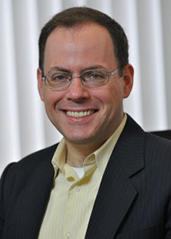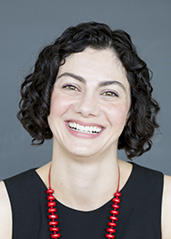
 Tyler Giannini and Susan Farbstein, Clinical Professors of Law, pull back the curtain on pedagogy for students in the seminar Advanced Skills Training in Strategic Human Rights Advocacy by making them part of a learning community and giving them ownership over the learning process. For example, each year students work to improve simulations in which they originally were participants, in an earlier prerequisite seminar attached to the International Human Rights Clinic.
Tyler Giannini and Susan Farbstein, Clinical Professors of Law, pull back the curtain on pedagogy for students in the seminar Advanced Skills Training in Strategic Human Rights Advocacy by making them part of a learning community and giving them ownership over the learning process. For example, each year students work to improve simulations in which they originally were participants, in an earlier prerequisite seminar attached to the International Human Rights Clinic.
Using a student cohort to test and innovate new training materials
The benefits
The seminar effectively acts as a pedagogy lab and delivers a “built-in reflection tool” for the law clinic to innovate and improve. The clinic obtains valuable insights from students who have participated in projects and simulations in prior terms. The advanced students provide more than mere feedback and are able to experiment with and implement new training models for the clinic. This process provides students an opportunity to develop and then apply leadership skills in order to advance social justice.
The challenges
Building a cohesive learning community is a “huge time commitment for instructors” who must shift students’ mindsets towards collective, collaborative work rather than simply learning as individuals. Farbstein, Giannini, and their team spend lots of face-time with students, from prep work to debriefs to continual check-ins. “We talk to every student prior to the start of the course to explain the philosophy and what is expected.”
Takeaways and best practices
-
Focus on a specific pedagogical approach.
In addition to simulations, students in last semester’s advanced course created “hack-a-thons” rooted in human-centered design thinking. They conducted six workshops during the term, testing approaches and providing recommendations for ways to adapt the human-centered design model for use in the clinic. -
Develop structures for receiving institutional feedback.
Farbstein and Giannini require students to submit a final paper that “identifies and critiques an aspect of the clinic’s existing model—and then proposes how we, as a clinic, can do better going forward.” This allows students to analyze pedagogical approaches in which they’ve taken part first-hand and offer concrete ways to improve the clinic’s training approaches. -
Break down hierarchies.
Giannini and Farbstein believe that the only way to successfully build a learning community is for everyone involved to feel comfortable making contributions. The instructors make clear that they are also constantly learning and foster a collaborative approach that helps break down existing hierarchies. On occasion they’ve brought in an outside facilitator to develop trust among the whole cohort, instructors included.
Bottom line
“It’s about pushing back against the power dynamic of professor and student and saying we’re a cohesive learning community.” Demonstrating these leadership principles in the classroom provides students with a transferable skillset to real-world community-based practice.
